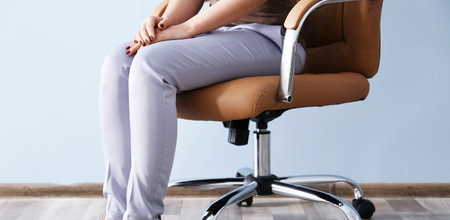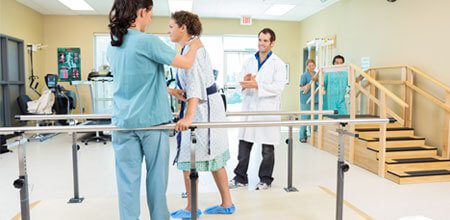Factors Associated with Sitting and Standing Balance
Categories: Physical Rehabilitation
What factors are associated with sitting and standing balance difficulties at admission to inpatient rehabilitation?
Past Studies
Past Studies show that traumatic brain injuries can cause changes in sitting and standing balance. Balance is a term used to describe an individual’s independent ability to control his or her body to remain in an upright position. Changes in balance may be a direct result of injury to the brain or limbs. It can also occur when multiple body systems–the visual, sensory, and vestibular systems are injured. Injury can affect the way an individual moves and perceives his or her body position to be in the environment. The balance systems need to work together as a whole to provide input for the controlled muscle movements necessary for balance. Past studies have found that individuals that are older, female, and have severe brain injuries appear to experience balance problems more frequently. Overall, limited research has been
This Study
This study included 908 adults with traumatic brain injury from ten Traumatic Brain Injury Model Systems (TBIMS). As part of the TBIMS subjects and their family were interviewed. Medical records were obtained to collect data about the participants. Physicians evaluated the individuals’ sitting and standing balance within 72 hours of their admission to inpatient rehabilitation. The researchers statistically analyzed all of the information to identify factors that were associated with sitting and standing balance.
The researchers found that 40.3% of the participants had normal sitting balance, whereas only 16.4% had normal standing balance. It was easier for the participants to achieve varying degrees of sitting balance than standing balance. Overall, those younger than age 50 had better sitting and standing balance.
The researchers found that initial abnormal pupil responses were related to sitting impairments. A history of brain compression was associated with impaired standing, but not sitting balance. Individuals with poor sitting and standing balance had more severe brain injuries, longer lengths of stay in rehabilitation, and medical complications, such as infections and breathing failure. The cause of injury and gender did not relate to sitting or standing abilities.
Who May Be Affected By These Findings
Individuals with traumatic brain injury and their loved ones, clinicians, healthcare professionals, researchers.
Caveats
The results of this study indicate that although injury severity and medical complications are factors associated with impaired balance, they do not predict or classify balance performance. The factors identified in this study had low prediction accuracy.
Bottom Line
The researchers found that at inpatient rehabilitation admission, the factors of age, injury severity, and medical complications were associated with impaired sitting and standing balance.
Please take a moment to comment on the value of this abstract:
Click here to take a brief survey
Find This Study
Greenwald, B. D., Cifu, D. X., Marwitz, J. H., Enders, L. J., Brown, A. W., Englander, J. S., & Zafonte, R. D. (2001). Factors associated with balance deficits on admission to rehabilitation after traumatic brain injury: A multi-center analysis. The Journal of Head Trauma Rehabilitation 2001; 16: 238-252.




